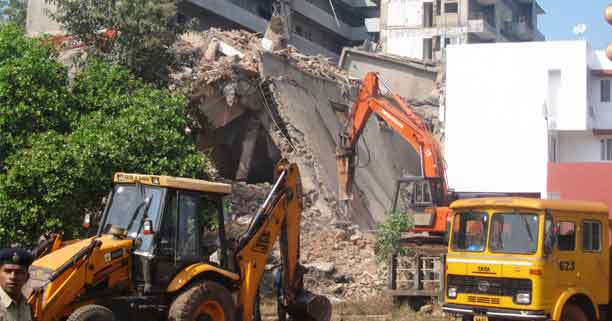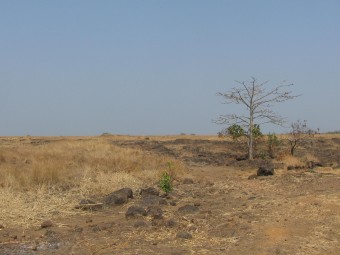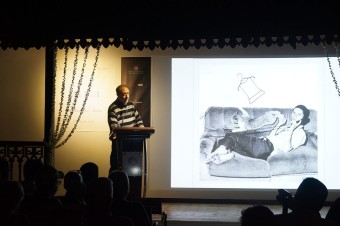The deadly collapse at Canacona
The tragic collapse of a newly built building of Ruby Residency at Canacona has sent shock waves all over Goa. A four-storied block of flats came crashing down on 4th January, sildenafil killing many workers (24 as of going to print), injuring many more and with more bodies expected to be recovered from the debris.
This is the most terrible mishap in the Goa construction industry to date, and should open the eyes of the public on many aspects of the building scenario. Let us look at just three issues that have emerged from the Pandora’s Box at Canacona.
1. Risks of a Contractor-cum-Structural engineer
The position of Structural Engineer in a building project is an important one and should be independently held. In the Ruby Residency project, Vishwas Desai of Coastal Builders was reportedly functioning as Contractor as well as Structural Engineer. In such a case, there are bound to be compromises made in checking and approving works for concreting and even in the design itself. A Contractor will seek to maximize profits, whereas a Structural Consultant has to adhere strictly to Building Codes for Quality and Stability. When one person plays both roles, there is no independent audit of quality and if that person is unscrupulous, quality will suffer. The Town Planners and Municipal chiefs must enforce this separation of roles.
The Structural Engineer, or RCC consultant as he is often called, is usually an invisible cog in the industry. Flat buyers would do well to enquire into the track record and reputation of this important professional who will determine the life of their building (as well as their own lives!). Too often a crooked builder may employ an engineer who is barely qualified and inexperienced for this vital role.
Our government authorities place the liability of the building stability squarely on the project’s Structural Engineer and wash off their hands. If the Consultant bungles up the job, it is too late. Precious lives are lost and crores of rupees of hard earned savings end up in rubble. In countries like the UAE, after the Consultant has checked the work, the Contractor informs the local Municipality and then a Municipal Engineer inspects the concrete work and certifies it for casting. Without this approval, a slab cannot be concreted. Our Goa government engineers must intervene and check at crucial stages of construction, so that such tragedies do not take place. But if the government system itself is corrupted or if the government engineers are themselves incompetent, then the situation is hopeless.

2. The Hills are Unforgiving
Trying to grab and build on every square meter of a hillock is fraught with danger. The collapsed building was erected close to a retaining wall that had been backfilled. It goes without saying that a building must have strong foundations. If columns settle at their foundations, a massive failure is imminent. There are some buildings in Panjim and Vasco and other areas that have been built on soft clayey soil, and over the decades they have sunk by several feet. If the land is flat and the subsoil strata is uniform, the entire building sinks gradually and uniformly over the years, but may not collapse. But when differential settlement occurs, where part of the building columns sink deeper than others, then the RCC frame of the building cannot remain stable and collapses. When rockslides occur in areas like Altinho, the load dispersion of the foundations of buildings on such hillslopes is affected and this can cause failure. Hence it is important to monitor steep slopes in residential areas and stabilize them wherever possible.
Wisdom must prevail at the time of preparing site plans and placing buildings. This should not be done in the comfort of the office, but on the ground, where the obvious and potential risks are clearly seen. An Architect or Builder who sights a building on an unsafe slope is as guilty as the Structural Engineer who then goes ahead with the design.
3. Quality Control and Soil Investigation
The above factors seem to be applied only for large government and corporate projects in Goa. The average local builder does not carry out soil investigations. A test pit is usually dug to gauge the ground stability. Even a flat plot may have layers of slowly compressing clay beneath. There may be old buried wells or septic tanks on the site, or subterranean cavities caused by tree roots,etc. Many old abandoned stone quarries have been filled in Goa, their vast expanses becoming part of property developments. A house or building on such soil needs to be carefully designed, with enough bearing capacity and a well braced and laterally tied structure.
Cube tests for testing compressive strength and slump tests for workability of concrete are rarely done. Even the concrete from Ready-Mix-Concrete (RMC) plants is sometimes of dubious quality, resulting in cracks on the slab surface and difficulties in setting. Auditing and surprise checks on RMC plants are the need of the hour, as more and more projects rely on this convenient supply of ready concrete.
Finally, this should be a wakeup call for all old RCC framed buildings. Reinforced concrete came into Goa in the mid 1900s. There are still some old buildings like the Mandovi Hotel in Panjim that are in reasonably good shape because they are well maintained and given protective coats of paint regularly. Goa’s saline rains quickly eat away at the steel bars in concrete, shortening the building life. Look up at the soffit of the roof slab of the Goa University lobby and you will see corroded bars and loosening concrete in some areas. The Goa State Museum built on the reclaimed area of Patto in Panjim shows cracks in its plinth and along the walls, caused by settlement of the foundations. Many of the passages of commercial buildings and markets in Panjim, Margao, Vasco and Mapusa show disintegrating concrete slabs. Take a closer look at the exposed steel bars and you can see the steel has crumbled to nothing! It is time to ruthlessly condemn such structures (including the stressed out Zuari Bridge) and rebuild them with better material and methods. Else it is just a matter of time before the sky begins to fall on our heads.
Jose Lourenco is an Engineer and Writer




